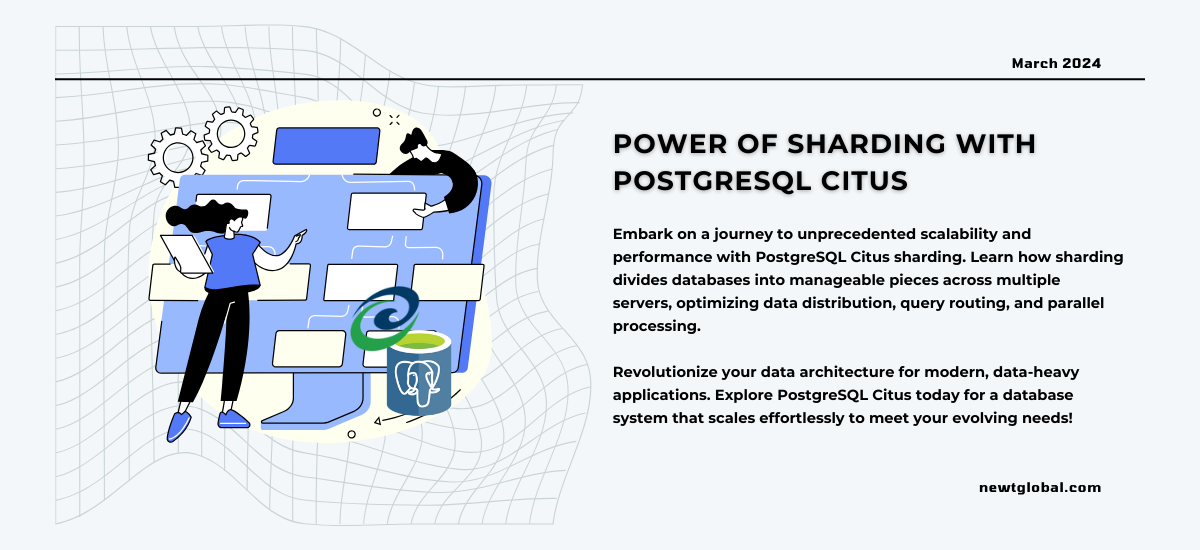
Managing a database can be really tough, especially for big companies. When there’s a lot of data and many people using an app, traditional databases can struggle to keep up. That’s where PostgreSQL Citus comes in. It’s a clever tool that helps by breaking a big database into smaller, easier-to-manage pieces. This blog post will explain how it does this through a process called sharding and how it can make handling data much better.
What is PostgreSQL Citus?
At its heart, PostgreSQL Citus takes a big database and breaks it down into smaller, easier-to-handle chunks called shards. These shards are spread out over several servers. This isn’t just about making things smaller; it’s a smart way to organize data so that each piece is on a different server. This helps everything run faster, cuts down on wait times, and makes better use of the servers.
Let’s Break It Down:
-
- Shard: A shard is a small part of the whole database. It’s like having a mini-database that holds just a piece of your data.
- Node: This is a server in the cluster that stores shards. It’s where the data lives and gets taken care of.
- Coordinator Node: Think of this as the boss that tells queries where to go. It makes sure that when you ask for data, it finds out which shard has it and gets it quickly.
How Sharding Works
-
- Data Distribution: First, data is spread out by splitting it into shards that each hold different data. This is better than putting different tables in different shards because it allows for more detailed management and growth.
- Query Routing: When you ask for data, the coordinator node figures out where the data is and makes sure your question goes to the right place.
- Parallel Processing: Queries are run at the same time across many servers, making everything much faster.
- Aggregation: In the end, the bits of data from all over are put together by the coordinator node into a complete answer.
Final Thoughts:
PostgreSQL Citus is a game-changer for managing big databases. It uses sharding to help databases handle more data and run faster, making sure applications can operate smoothly no matter how much data they’re dealing with. It’s a forward-thinking way to work with large amounts of data, making everything more efficient from data organization to getting answers to your questions.
What’s Next?
By adopting PostgreSQL Citus and its sharding method, you’re setting yourself up for success in handling big data challenges. It’s a smart move towards keeping your applications running quickly and efficiently, no matter how much data you’re dealing with. So, if you’re ready to take your database to the next level, consider stepping into the future with PostgreSQL Citus sharding.
After reading the blog post, if you’re excited about optimizing your database management and embracing the power of PostgreSQL Citus, take action today. Visit Newt Global at newtglobal.com to learn more about how our solutions can transform your data infrastructure. For personalized assistance and inquiries, reach out to us at marketing@newtglobalcorp.com.
Newt Global DMAP is a world-class product enabling mass migration of Oracle Db to cloud-native PostgreSQL Faster, better, cheaper.
